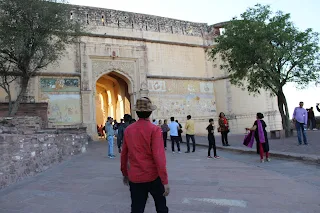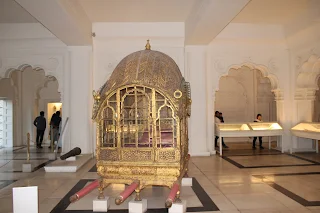#Sundarbans Tour
1. Our Tour Planning
I visited the Sundarbans 34 years ago when I was single. We have decided to visit the Sundarbans with our two adult sons this time. We explored several options for the Sundarbans tour. Finally, we have decided to travel to the Sundarbans with Sagar Sangam Travels. We have booked a three-day and two-night tour for which they charged Rs. 3500.00 for each person, which is fair compared to other options. Four persons included myself, my wife, and our two adult sons. The package tour included breakfast, lunch, dinner, snacks, and a two-night hotel stay. The package tour included a visit to certain tourist spots in the Sundarbans. Those tourist spots were Gosaba, Sajnekhali, Sudhanyakhali, Dobanki Watch Tower, and Loknath Temple. It also included a pick-up from Canning Railway Station and a drop-off at Sonakhali Ferry Ghat by auto. It is preferable to have a Sundarbans tour during the winter season. Thus, we scheduled our tour from December 6 to 8, 2024.
2. How
to reach Sonakhlai Ferry Ghat?
One
can take a local train from Sealdah to Canning. It takes about one hour and 20
minutes to reach Canning Railway Station. The nearest international
airport is Netaji Subhash Chandra Bose International Airport, Kolkata. It is
about 14 km from Sealdah Railway Station. Our tour operator arranged for vehicles
to pick us up at Canning Railway Station and take us to Sonakhali Ferry Ghat.
Sonakhali Ferry Ghat is about 17 km from Canning Railway Station. One can reach
Sonakhali Ferry Ghat by road. Paid parking is available near Ferry Ghat for Rs.
150.00 per day. We reached Sonakhali Ferry Ghat by 9:00 am on December 06, 2024,
by our vehicle. We parked our vehicle at the parking place from where we walked
about 600 meters to Sonakhali Ferry Ghat.
3. The
first day of our tour.
After
we boarded the boat at Sonakhali Ferry Ghat, the staff served us a welcome
drink. Thereafter, they served us breakfast. The boat was big and could carry
40 passengers. At 11:30 am, they provided us with snacks and tea/coffee. They
provided us with prawn pakora as snacks. After sailing through the Hogol River,
Gumti River, and other rivers, they took us to Gosaba. We got down from the
boat at Gosaba Ferry Ghat. We visited Hamilton’s Bungalow, Rabindranath
Tagore’s Bungalow, and Beacon Bungalow.
3.1
Hamilton’s Bungalow
Hamilton's
Bungalow is also called Gosaba Beacon Bungalow. Sir Daniel Mackinnon Hamilton,
a Scottish businessman, built it in 1903. He contributed to the development of
the Sundarbans region. He introduced the Co-operative System in Gosaba and in
the Sundarbans region. He established the cooperative credit society with 15
members in Gosaba. He was also known for establishing the Zamindari System in
Gosaba. He had a strong association with Rabindranath Tagore.
3.2
Rabindranath Tagore’s Bungalow
Rabindranath
Tagore's father, Debendranath, built this bungalow in 1890. A beautiful garden
surrounds it. This bungalow is a museum. It preserves Tagore's legacy and
displays his personal items, manuscripts, and photos. Traditional Bengali
furniture and artwork decorate the interior of the bungalow. Tagore spent many
of his summers in this bungalow. He engaged himself in writing, composing
music, and gardening.
3.3
Beacon Bungalow
The
Beacon Bungalow, built in 1903 by Sir Daniel Hamilton, is in a quiet area of
Sundarbans National Park. Sir Daniel Hamilton was a Scottish businessman and
social worker. They named this bungalow after the beacon light that once stood
nearby. This bungalow stands on stilts and has lush gardens surrounding it. The
interior of the bungalow features antique furniture and paintings. This
bungalow was a meeting place for key talks during the British colonial era.
After
completing sightseeing at Gosaba, we reached Pakhiralaya by boat. At
Pakhiralaya, they allotted us hotel rooms for a two-night stay. Many shops near
Ferry Ghat at Pakhiralaya sell local crafts and various articles. Our stay in
the hotel was fine. On the first day at the hotel, our tour operator
entertained us. They organized the Jhumur dance and other folk dances by local
artists, with snacks and tea. We enjoyed the folk dance. The tour operator
provided dinner in the hotel. After dinner, we went to our hotel room to take a
rest and refresh ourselves for the next day's tour.
4. The
second day of our tour.
The
next day, we left our hotel at 8:00 am after tea. We went to Ferry Ghat at
Pakhiralaya for our boat tour of the Sundarbans. On the boat, they served us
breakfast and tea. The boat departed from Pakhiralaya Ferry Ghat as scheduled.
It was for sightseeing at Sajnekhali, Sudhanyakhali, Dobanki, and Jharkhali
Watch Towers.
4.1
Sajnekhali Watch Tower
First, we got off the boat at Sajnekhali Ferry Ghat. Then, we entered Sajnekhali Wildlife Sanctuary. Sajnekhali Wildlife Sanctuary was set up as a sanctuary in 1976. On the way to Sajnekhali Watch Tower, there was high fencing. It protected visitors from wild animal attacks. On the way to the Watch Tower, we saw leopards, crocodiles, fiddler crabs, and monkeys. Those animals were outside the fencing area.
From the watch tower, we had a bird's-eye view of Sundarbans National Park. After getting down from the watch tower, we walked to the ferry ghat. We enjoyed the scenery along the way. On the way, inside the wildlife sanctuary, there was a Mangrove Interpretation Centre. We boarded the boat. It took us to another tourist spot, Sudhanyakhali Watch Tower.
4.2
Sudhanyakhali Watch Tower
After
getting down from the boat, we proceeded towards Sudhanyakhali Watch Tower. As
we entered Iceland, we saw Bono Bibi Temple. All locals, regardless of
religion, worship Bono Bibi. They do this before venturing into the deep forest
for honey. We also found an old, abandoned ship lying on the bank of the river.
On the way to Sudhanyakhali Watch Tower, we found a mini forest of mangroves.
Their names were on the tree trunks. From the watchtower, we saw a sweet water
pond where the wild animals come to drink water. But we could not see any
animals near the pond. We also saw a dry river or waterway near the pond. This
river is full of water during high tide.
4.3
Dobanki Camp
After
getting off the boat at Dobanki Camp Ferry Ghat, we went to Dobanki Watch
Tower. The path to the Watch Tower was 20 feet above the ground. It had a grill
and a strong net as a canopy to keep tourists safe from wild animals. One has
to walk more than half a kilometer through this canopy to reach the Tower. On
both sides of the pathway, we had beautiful views of mangrove forests. We saw
many migratory birds swimming in the water bodies. We climbed up to the top of
the watch tower with the hope of seeing the royal Bengal tiger. But we could
not see any royal Bengal tiger. It’s a matter of chance to see the royal Bengal
tiger from the watch tower.
4.4
Jharkhali Island
After our visit to Dobanki Tower, we went by boat to Jharkhali Island. In the meantime, they served us lunch. We could buy the ticket to visit the Tiger Rehabilitation Centre until 4 pm. The entry fee is Rs. 30.00 per person. Jharkhali is very close to the forest area. One can hire a boat to venture into the island deep inside the forests. This island is famous for the Forest Department's Tiger Rehabilitation Centre. They treat wounded tigers here and release them afterward. We saw tigers moving in an enclosed area. It had high metallic fencing. We also saw crocodiles and birds. While returning to Jharkhali Jetty Ghat, we found many shops on both sides of the road. After our visit to Jharkhali Island, we boarded a boat to return to Pakhiralaya for a night stay at the hotel.
👈 Crocodile at Tiger Rehabilitation Centre
5. The
third and last day of our tour.
After
waking up, we packed and got ready to check out of the hotel at Pakhiralaya.
Our tour operator arranged the hotel rooms within the package. After checking
out from the hotel, we headed to Pakhiralaya Jetty Ghat. We would take a boat
to visit Lokenath Temple. Then, we would return to Sonakhali Ghat, where our
journey began on day one of our tour. Before boarding the boat, we bought a key
holder. It had the words "Sundarban Pakhiralaya" and a picture of a
Royal Bengal Tiger. We wanted to keep it as a memento at home. After we boarded
the boat, they served breakfast. At 11:30 am, they served snacks, and we got
down at Jetty Ghat to visit Lokenath Temple. We walked on the road surrounded
by a golden paddy field to reach Lokenath Temple. In between, we found
villagers selling vegetables and local honey on the roadside. We also
bought vegetables from that place. It was cheaper than those at the local
market. Paddy fields surround Lokenath Temple. You will have the feeling of
rural Bengal. The temple features a design based on rural architecture and
includes a roof made from straw. After our visit, we boarded the boat. It took
us to Sonakhali Ferry Ghat, where we began our Sundarban trip. The entire boat
journey was enjoyable. We loved the scenic beauty of the mangrove forests and
waterbodies.
6.
What is special about Sundarbans?
Sundarbans
is the largest delta. It has the world's largest mangrove forest, across parts
of India and Bangladesh. The Sundarbans Forest lies in the vast delta of the
Bay of Bengal. It is in the delta at the confluence of the Hooghly, Padma,
Brahmaputra, and Meghna rivers in the Bay of Bengal. The Sundarbans has the
Royal Bengal Tiger and Estuarine Crocodiles. It also has other endangered
species. The name 'Sundarbans' likely comes from the local name for the abundant
mangrove species, Heritiera fomes: the Sundari trees. In the past 200
years, the 'Sundarbans' shrank to one-third of its original size. This was due to
cyclones and rising sea levels from climate change. The mangrove forest
provides a biological shield against cyclones. High tide raises water levels in
the rivers and their branches in the Sundarbans. The mangroves are submerged in
water to some extent during high tide. The 'Sundarbans' is unique in its plants
and animals. It is home to many endangered species, like the Royal Bengal
Tiger, estuarine crocodile, Ganges and Irawadi dolphins, and sea turtles.
#Sundarbans
#Mangroves









































